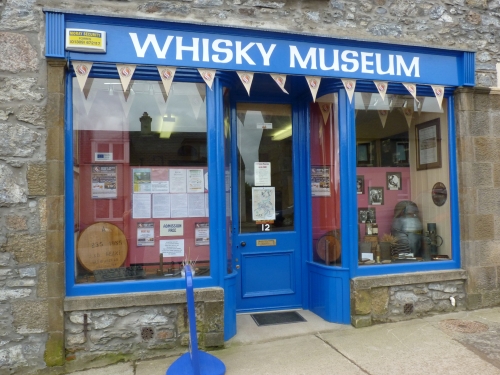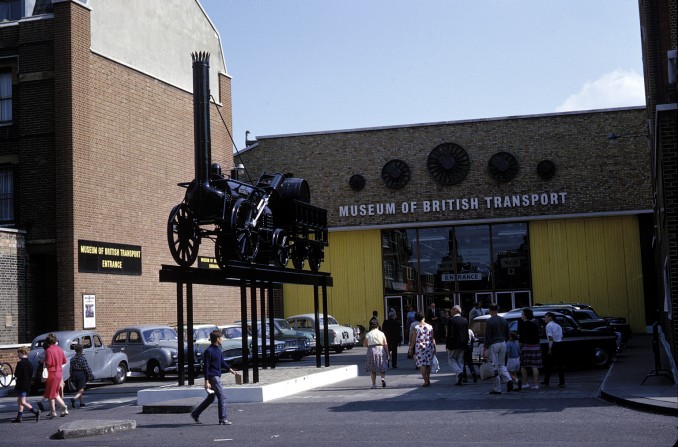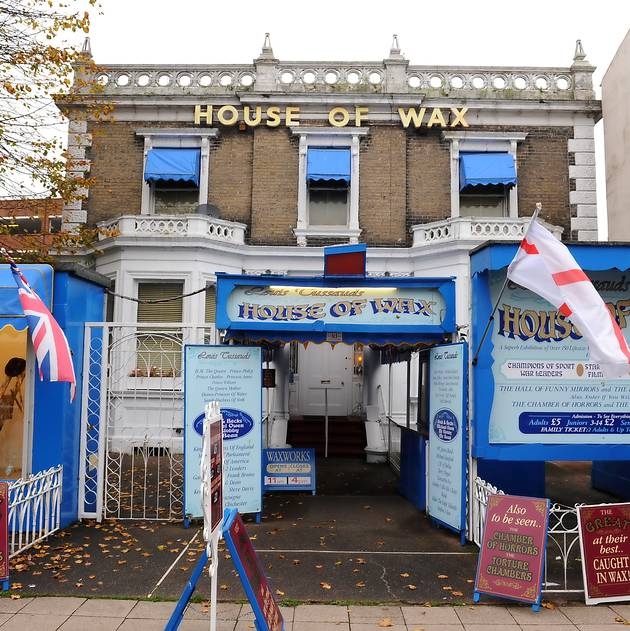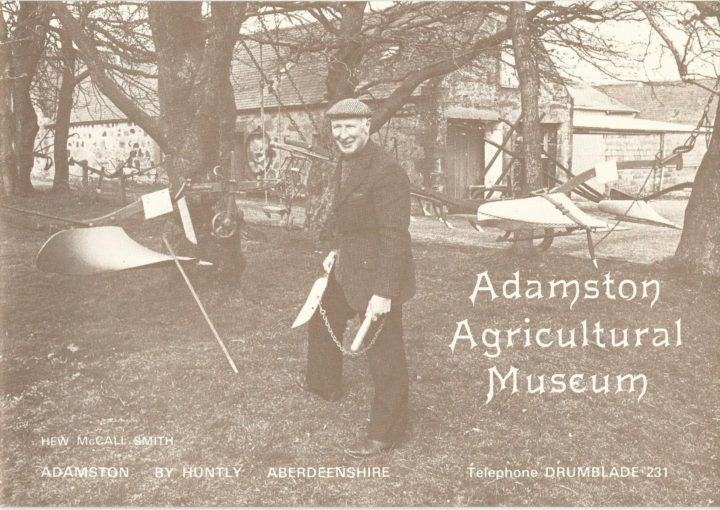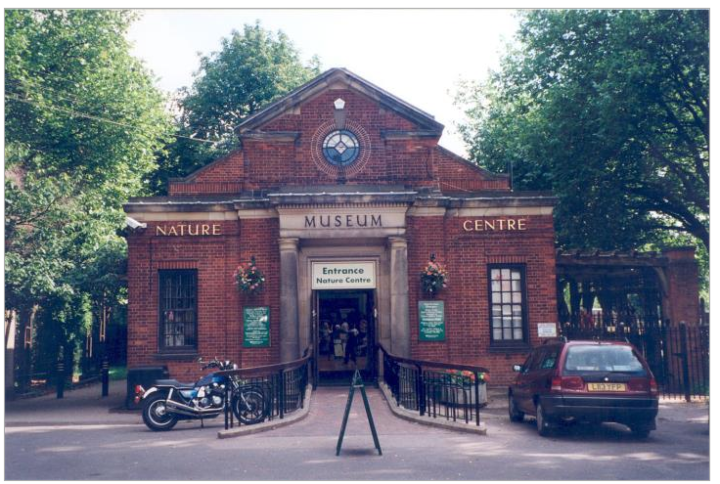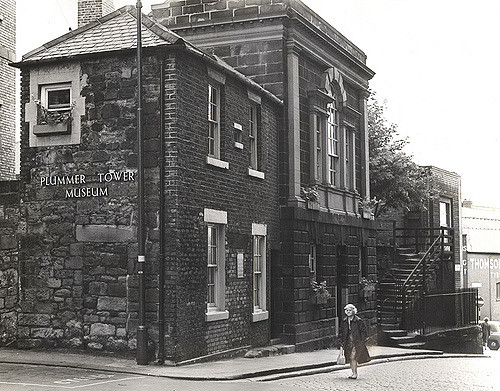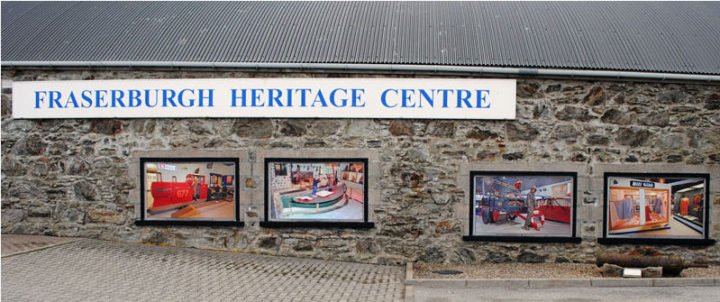During the spring of 2009 a running joke appeared in the letters page of The Guardian newspaper. Prompted by a double-spread photograph showing rows of antiquated toasters on display at the Toaster Museum in Kettwig, Germany, one reader wrote proposing that a visit to the Toaster Museum might be followed by a trip to the Bread Museum in Ulm or the nearby Cutlery and Salt museums. More suggestions followed as correspondents recommended the Egg Museum in Soyans, the Chamberpot Museum in Munich, Szentendre’s Marzipan Museum (with its life-size marzipan sculpture of Michael Jackson), Condom’s Condom Museum, the Mousetrap Museum in Eifel, and a penis museum in Husavik, Iceland.
Numerous other curious collections were mentioned until, after some two or three weeks, the letters began to take on an overtly playful tone. While purporting to recommend museums, these missives were actually an exercise in making puns. Allan Blunden started the trend by commenting that ‘those not too set in their ways’ might enjoy a trip to the German Cement Museum, Josie Greenwood followed suit noting that the ‘Button Museum in Ross-on-Wye is fastenating’, and Malcolm Jones thought the Spam Museum in Austin Minnesota ‘a good place to fritter away a few hours’. Other Guardian readers found the Dickens House bleak, The Fan Museum cool, judged Limerick Museum pure poetry, and Dartmoor Prison Museum quite captivating. The recommendations even began to began to reference other running jokes on the letters page including one, which would be impossible today, about uses for empty 35mm film canisters.
At the time the correspondence appeared, I was just beginning to think about writing a book devoted to small museums that concentrated on particular types of objects or single themes, and particularly the domestic, culturally marginal, or ostensibly insignificant. Almost all of The Guardian readers focused on museums that fitted this category and thinking that they may be useful at some point in the future, I copied the letters down. Here are the first half now, the second set is to follow:
Having showcased the Toaster Museum in Kettwig it might be appropriate to follow with the Bread Museum in Ulm. It is forever engraved on the memory of several nephews and nieces, as was the Cutlery Museum (next to the Wallpaper Museum) in Kassel. Though my sister and I found them strangely entertaining! The Salt Museum was more hands-on. Some holidays just happen that way – sorry kids!
Gaynor Lewis, Smallburgh, Norfolk 4/04/09
Gaynor Lewis could link her visits to the Bread and Salt Museums with one to the Egg Museum in Soyans, in the Drome valley, France.
Robert Davis, London, 07/04/09
Readers hastening to Germany for the delights of Kettwig’s Toaster Museum, Ulm’s Bread Museum and the Wallpaper and Cutlery Museums should continue southwards for the Chamberpot Museum in Schloss Nymphenburg, Munich. Unmissable.
Kirsten Cubitt, Sheffield 10/04/09
No trip to Hungary is complete without a visit to Szentendre’s Marzipan Museum with its life-size model of Michael Jackson carved in marzipan.
Ian Clark, Chartham, Kent 11/04/09
Germany does not have a monopoly on unmissable museums. While on honeymoon in 2001, we went to the Musée du Cartonnage in Valreas, Provence. Cardboard has not been the same for us since.
Nina Young, Nottinghamshire 13/04/09
Then on to the Condom Museum in Condom
Jane O’Mahoney, Launceston, Cornwall 13/04/09
Don’t miss Neroth, in the Eifel region of Germany, where the Mousetrap Museum traces the development of a local cottage industry – making mousetraps from bent wire, sold by travelling salesman throughout Europe.
Anthony King, Bristol 16/04/09
Visitors to Koblenz it he 1960s will have unforgettable memories of visiting the ‘Binns’ Museum in the Ehrenbreitstein fortress, devoted to the processing of pumice and the manufacturing of breezeblock.
Jane Caplan, St. Anthony’s College, Oxford 17/04/09
The Whip Museum in Killer, Germany, takes some beating.
David Hemsworth, Haywards Heath, West Sussex 18/04//09
Once you’ve visited le Musée du Pruneau in Agen you’ll want to go regularly.
Don Jackson, York 18/04//09
Husavik in Iceland boasts a phallological museum exhibiting the penises of most of the islands mammals. It doesn’t yet have a human penis, although a local farmer is reported to have donated his – upon his death.
John Land, Bury St. Edmunds, Suffolk 20/04/09
For those not too set in their ways I recommend a visit to the German Cement Museum. It’s situated on the windswept outskirts of Henmoor on the road to Cuxhaven.
Dr. Allan Blunden, Liskeard, Cornwall 21/04//09
Visitors to the south-east of France should take their hats off to Le Musée du Beret in Nouy, between Lourdes and Paris.
Tim Nokes, Kendal, Cumbria 21/04//09
Why go abroad for unusual historical collections when you can visit the Prickwillow Drainage Engine Museum in fenland Cambridgeshire.
John Loader, West Wilton, North Yorkshire 22/04/09
I am quite a fan of The Fan Museum in Greenwich. It is so cool
Tom Frost, London 22/04/09
The Button Museum in Ross-on-Wye is fastenating
Josie Greenwood, Worksop, Nottinghamshire 23/04/09
Have the courage to visit the Bottle Museum – run by the wonderfully named Codswallop Trust – at the Elescar Heritage Centre near Barnsbury.
Stuart Currie, Barnsley, South Yorkshire 24/04/09
Does the Baked Bean Museum of Excellence in Port Talbot set the pulses racing?
Alan Paterson, Cambridge 24/04/09
None of them are a patch on the Quilt Museum and Gallery in York
Steve Bradley, York 24/04/09
Surely after the Bottle Museum the next step would be to see the Flessenscheepjes (ships-in-bottles) Museum in Enkhuizen, Holland. And while you’re there, you might as well look in the Sigarbandjes (cigar band) Museum in Volendam
Willem Mejs, Birmingham 27/04/09
The Sewing Machine Museum in South London left me in stitches
Tom Bolger, Woodbridge, Suffolk 27/04/09
Since this series is going to run and run, I suggest you find time for the clock museum at Upton Hall near Newark.
Rev. Tony Bell, Chesterfield, Derbyshire 28/ 04/09
I went to the Idaho Potato Museum in Blackfoot Idaho. Who could resist the strapline ‘Free baked taters to Out-of-Staters’. They had the original Dan Quayle ‘potatoe’ and some potato ice-cream that I would not recommend.
Neil Skilling, Loanhead, Midlothian 28/04/09
Anyone visiting Dumfriesshire might find interest in the Savings Bank Museum at Ruthwell
Neil Forrest 29/04/09
The Dickens House is bleak
Jan Pitt, London 29/04/09
Why not whip along to the leather museum at Walsall?
Ian Joyce, Milton Keynes, Buckinghamshire 30/04/09
I’m sorry Jan Pitt found the Dickens House Museum so bleak. She shouldn’t have gone with such great expectations.
Phillip Stephenson, Cambridge 30/04/09
I’ve heard that the Museum of Country Life near East Kilbride is the best in its field
Colin Montgomery, Edinburgh 01/05/09
The Lawrence Sterne Museum in Coxwold is xxxx xxxxx x xxxx
Patrick Wildgust
Shandy Hall, Coxwold, N. Yorkshire 01/05/09
To say nothing of Waregub’s “Museum which ought to be in a Museum”
Geoffrey Pogson, Gillingham, Dorset 01/05/09
Always a popular starter – Arnay-le-Duc’s Soup Museum
Bob Johnson, Durham 02/05/09
The Colour Museum in Bradford should be on any list of buildings to see before you die.
Cliff Challenger, Bradford 02/05/09
None of the museums can cut it like the Mustard Museum in Mount Horeb, Wisconsin, USA
Dave and Moira Emmett, Leeds 04/05/09
The Museum of London is just capital
David Joss Buckley, London 04/05/09
Only a blip on the map, but the Radar Museum, Neatishead, Norfolk is well worth a visit.
Don Baines, Malden, Essex 05/05/09
The British Lawnmower Museum of Southport is a cut above the Mustard Museum of Wisconsin.
Bob Mays, Welwyn Garden City, Hertfordshire 05/05/09
06/05/09
Tar for mentioning the Asphalt museum, Sacramento, California
Louisa Burville-Riley, Seveoaks, Kent
Limerick Museum, pure poetry.
Brian Hodkinson, Assistant curator, Limerick Museum, 05/05/09
Dartmoor Prison Museum – quite captivating
Johnny Ray, Dorchester, Dorset 07/05/09
Steve adores the Museum in Docklands
Moira Duhig, London 08/05/09
The Keswick Mining Museum in Cumbria is quite oresome
Chris Drinkwater, London 09/05/09
Wigan Museum has no peer
Eric Stanier, Macclesfield, Cheshire 09/05/09
The Discovery Museum in Newcastle is a great find.
Robin Campbell, Gateshead, Tyne and Wear 11/05/09
Missed the Oyster Museum while visiting Whitstable. Oh shuck.
Paula Evans,
Whitstable, Kent 11/05/09
Pull out all the stops and visit the St. Albans Organ Museum
John Bailey, St. Albans, Hertfordshire 12/05/09
It’s funny that no one’s mentioned the Museum of Humour and Satire in Gabrovo, Bulgaria.
Mike Whittaker, Rugby, Warwickshire 12/05/09
The sad news that all the Victorian exhibits are having to be sold off would suggest that the Shambles Museum in Newent is in a bit of a mess.
Max Perkins, Frome, Somerset 12/05/09
Maybe your readers would like to ‘get on up’ to the Sex Machines Museum in Prague.
Dan Adler, Farnham, Surrey 13/05/09
The Manx Kipper Factory and Museum. Smokin’
Steve Pinder, London 14/05/09
I’m rooting for le Musée de la Truffle, Périgord
Colin Virden, Mattlock, Derbyshire 14/05/09
Amsterdam has its Sheepvaart Museum but I wasn’t brave enough to go in.
Fergus Lang, Irby, Wirral 15/05/09
The River and Rowing Museum in Henley-on-Thames is more than just a load of old rowlocks.
Chris Whitehead, Hambledon, Oxfordshire 15/05/09
There used to be a Museum of Atheism in Shkoder, northern Albania, but I don’t believe that it exists anymore
Brian Ferris, Tunbridge Wells, Kent 16/05/09
You should try to squeeze in a Visit to the Concertina Museum in Derbyshire
Robert Bigio, London 16/05/09
The Helicopter Museum in Weston-super-Mare must be an uplifting experience
Julian Dunn, Great Haseley, Oxfordshire 18/05/09
Have a look through Sunderland’s glass museum
Chris Williams, Rufford, Lancashire 19/05/09
There is a Hat Museum in Stockport that has a rival in Narbonne in France. There is a lot of titfer tat between them.
John Banbury, Marple, Stockport 19/05/09
Kidderminster’s new carpet museum will take some beating
Clliff Wilmott, Bewdley Worcestershire 21/05/09
Hurry to the submarine museum in Gosport – there are fears it’s going under.
Clare Ash, Southsea, Hampshire 21/05/09
It’s good that the Hancock Museum is reopening after a £26million redesign and rebuild. Ought to be worth half an hour of anyone’s time.
Anthony Bramley-Harker, Watford 22/05/09
I found a visit to the Museum of Lifts in Brussels and elevating experience.
Pat Nicholls
St. Neots, Cambridgeshire 22/05/09
A visit to the Tinplate Museum in La Tour Blanche, Dordogne gave me unalloyed pleasure
Ian Churchill, Leeds 23/05/09
The Gustav Holst Museum in Cheltenham is on another planet.
Susan Davis, Cheltenham 25/05/09
© Fiona Candlin August 2017
